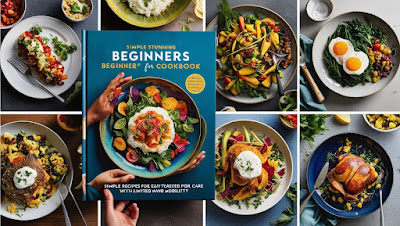Maintaining fulfilling relationships and a healthy love life can be challenging under the best of circumstances, but it becomes even more complex when dealing with physical or emotional limitations. Whether you're experiencing mobility issues, chronic illness, or any other factor that affects your daily functioning, it's still possible to cultivate deep connections and enjoy a fulfilling sex life. In this blog post, we'll explore strategies for navigating sex, love, and relationships when you're not functioning at 100%.
1. Open and Honest Communication
Communication is the cornerstone of any successful relationship, and it's especially important when dealing with limitations. Openly discussing your needs, concerns, and boundaries with your partner can prevent misunderstandings and build a stronger bond. Here are some tips for effective communication:
- Express Your Feelings: Share how you're feeling physically and emotionally. Whether you're dealing with pain, fatigue, or frustration, being honest about your experiences helps your partner understand your perspective.
- Discuss Intimacy Preferences: Talk about what makes you comfortable and what doesn't. This includes discussing physical limitations and any adjustments that might be necessary for intimacy. For example, you might need to explore different positions or pacing to accommodate your needs.
- Set Boundaries: Clearly define what you're comfortable with and what you need to avoid. This could involve setting boundaries around physical activities, emotional topics, or even time spent together. Boundaries help ensure that both partners feel respected and understood.
2. Adapting Intimacy to Your Needs
Intimacy doesn't always have to follow traditional norms. Adapting your approach to suit your physical and emotional needs can lead to a fulfilling and satisfying relationship. Here are some ways to adapt:
- Explore Different Forms of Intimacy: Physical intimacy isn't limited to sexual activities. Consider exploring other forms of touch, such as cuddling, holding hands, or giving massages. These activities can foster closeness and connection.
- Focus on Emotional Intimacy: Emotional closeness is just as important as physical intimacy. Spend time talking, sharing experiences, and connecting on a deeper level. Activities like watching movies together, cooking meals, or taking walks can also strengthen your bond.
- Use Adaptive Tools and Techniques: If physical limitations are a concern, consider using adaptive tools and techniques to enhance comfort and pleasure. For example, supportive pillows, mobility aids, or even specialized sex toys can make intimacy more accessible and enjoyable.
3. Prioritizing Self-Care and Well-being
Taking care of your physical and emotional well-being is crucial for maintaining a healthy relationship. When you're not functioning at 100%, it's essential to prioritize self-care:
- Listen to Your Body: Pay attention to your body's signals and know when to rest. Pushing yourself too hard can lead to burnout and negatively impact your relationship.
- Manage Stress and Anxiety: Dealing with limitations can be stressful, and it's important to find healthy ways to manage anxiety. Techniques like mindfulness, meditation, or talking to a therapist can help.
- Stay Connected with Support Networks: Don't hesitate to lean on friends, family, or support groups. Having a strong support network can provide emotional strength and practical assistance when needed.
4. Addressing Insecurities and Fears
It's natural to experience insecurities and fears when dealing with limitations, especially in the context of a romantic relationship. However, addressing these feelings head-on can prevent them from becoming obstacles:
- Acknowledge Your Feelings: It's okay to feel insecure or worried about how your limitations might affect your relationship. Acknowledge these feelings without judgment and share them with your partner if you're comfortable doing so.
- Focus on Your Strengths: Remember that your limitations do not define you. Focus on your strengths, talents, and the unique qualities you bring to the relationship. This can boost your confidence and help you see your value beyond any limitations.
- Seek Professional Support: If insecurities and fears are impacting your relationship, consider seeking professional support. Therapists or counselors specializing in relationship issues can provide valuable insights and strategies for coping.
5. Embracing Flexibility and Patience
Relationships require flexibility and patience, especially when navigating challenges. Being adaptable and patient with yourself and your partner can foster a supportive and loving environment:
- Be Open to Change: Understand that your needs and abilities may change over time. Be open to adjusting your relationship dynamics and intimacy practices as necessary.
- Practice Patience: Patience is key when dealing with limitations. There may be times when you or your partner are unable to engage in certain activities, and that's okay. Focus on the positive aspects of your relationship and find joy in the moments you share.
- Celebrate Small Wins: Celebrate the small victories and milestones in your relationship. Whether it's a day without pain, a new way to connect, or simply a moment of laughter, recognizing these moments can strengthen your bond.
Conclusion
Navigating sex, love, and relationships while not functioning at 100% can be challenging, but it's entirely possible to maintain a fulfilling and meaningful connection with your partner. By prioritizing open communication, adapting intimacy to your needs, focusing on self-care, addressing insecurities, and embracing flexibility, you can build a strong and loving relationship. Remember, every relationship is unique, and the most important thing is to find what works best for you and your partner. With understanding, patience, and creativity, you can continue to enjoy a rich and rewarding love life, regardless of any limitations.

















